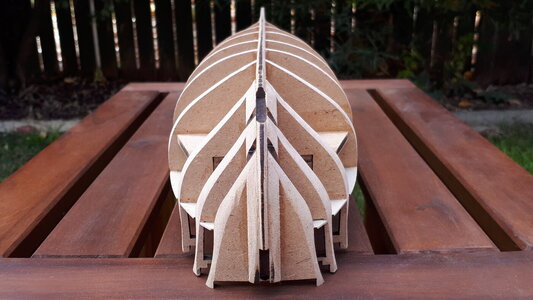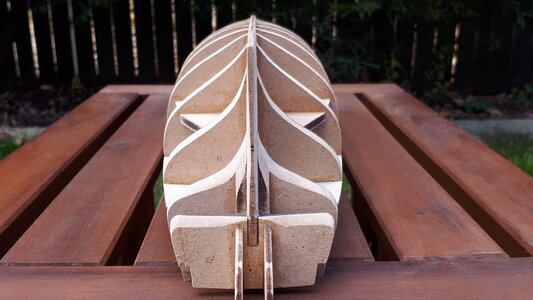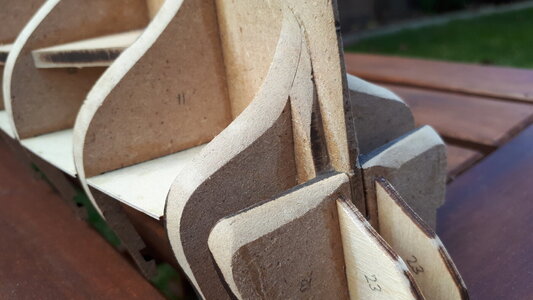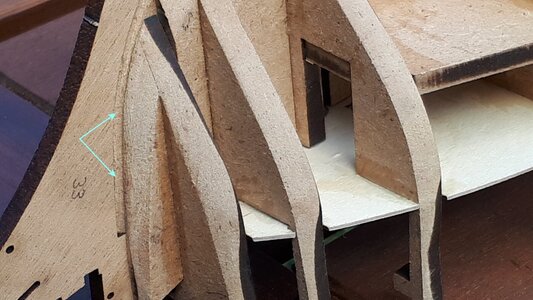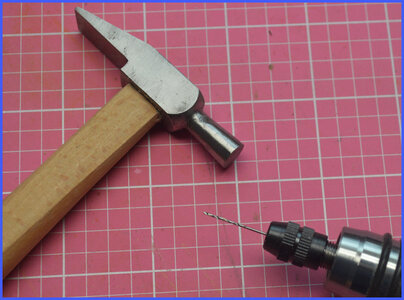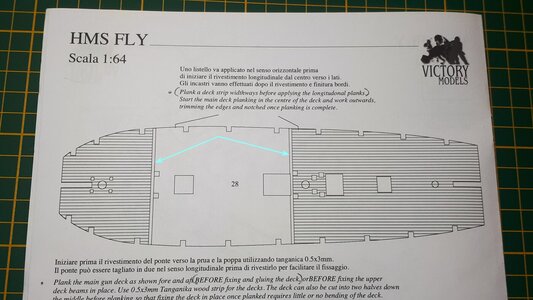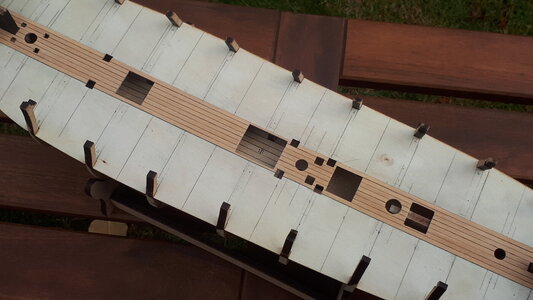I had to make a few decisions about the main gun deck planking that were largely contrary to Amati's guidelines. The first was to apply the planks with the gun deck in place, as opposed to planking the deck prior to fixing it to the hull. The second, more significantly, was to plank the full length of the gun deck and not divide it into three sections with two athwartships planks as suggested. This is very irregular and I can only assume it was designed that way for simplicity or to lighten the planking load. It is also very irregular for me to use the word 'athwartships', but you have to take the opportunities when you can
 View attachment 310624
View attachment 310624
There is no further or definite advice on the main gun deck planking, so I decided to begin with eight full-length planks along the centre and cut out the openings where applicable. I am planning on using a 1-3-5-2-4 butt shift pattern with 120mm planks on the remainder of the deck, so butting the first eight planks, none of which had distances between openings as long as 120mm, would be superfluous.
Amati supplies 3mm strips of Tanganyika for the deck planking, a fawn-coloured wood that is a bit fuzzy on the edges. I fixed the first eight centre planks in place after giving each plank a light sanding and applying a stick of 6B graphite to the edges for a caulking effect.
View attachment 310625

 .
.



